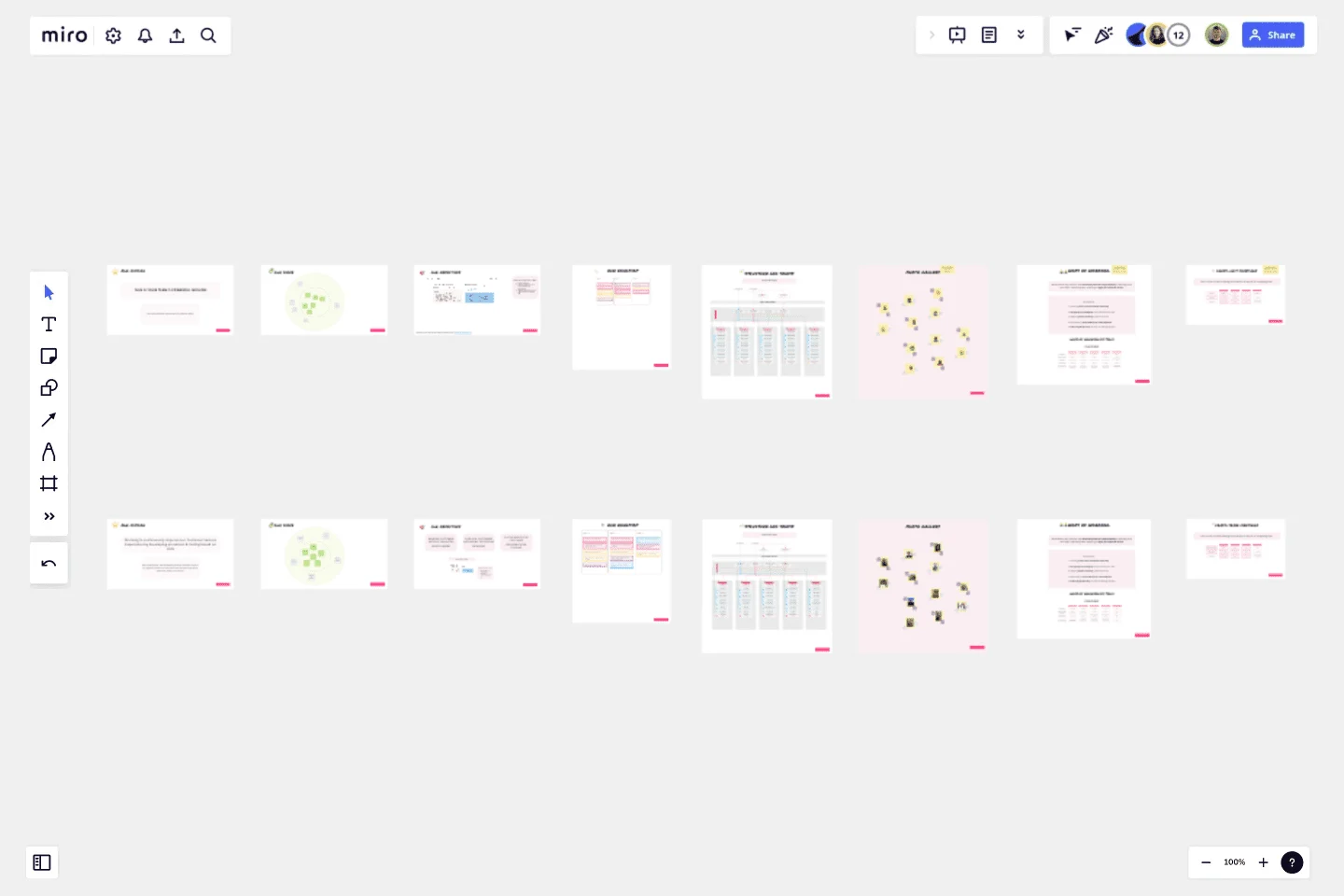Org Unit Visual Guide
This visual guide is especially suitable for large company departments, areas or tribes that need to document what their department does, how they work and who is part of their teams in an engaging and easy way.
The visual guide includes:
A navigation flow that imitates a board game
A template for a Simple Go Roadmap
A template for an Org Chart
A template for a Photo Gallery
A template for a Framework Overview
A Template for Regular Meetings Overview
How to use this template:
Just change anything you need;
Remember to block all the items in the board that you do not want others to edit
To use this template, it is recommended that you know or learn how to use Frames, Hyperlinks and that you know how to embed Google Documents in Miro.
This template was created by Mariana Solana Ros.
Get started with this template right now.
Innovation Matrix Template
Works best for:
Strategic Planning
Visualize the best way to grow your business with this Innovation Matrix template. It’ll show you how to streamline your innovation, make the right decisions about which areas of your business to innovate, and manage the entire process. So if you want to figure out the best way to innovate in your business, an innovation matrix can help.
V2MOM Salesforce Template
Works best for:
Meetings, Strategic Planning
Align goals and strategies across your organization with the Salesforce V2MOM Template. Bring everyone together towards the same goals.
Product Roadmap by Petra Ivanigova
Works best for:
Product Management, Roadmap
Plan your product journey with the Product Roadmap by Petra Ivanigova. This template helps you outline key milestones, set priorities, and visualize your development path. Use it to align your team, ensure everyone is focused on the same goals, and keep stakeholders informed. Ideal for product managers and teams looking to streamline their planning process and achieve strategic objectives efficiently.
Cloudflare RAG Architecture Knowledge Seeding Template
The Cloudflare RAG Architecture Knowledge Seeding template in Miro streamlines the sharing and visualization of cloud architecture knowledge, making it ideal for tasks like cloud infrastructure optimization and diagram creation. This template enables straightforward documentation and collaboration, ensuring complex information is accessible to all team members.
Entity–Relationship Diagram (ERD) HR Management System Template
Works best for:
ERD
The Entity–Relationship Diagram (ERD) HR Management System Template in Miro is designed to streamline the management of employee-related information and processes within an organization. This template allows for the visualization and organization of complex HR systems, making it easier to understand relationships and processes. It enables users to map out departments, positions, and employee details, including attendance records, payroll, and performance reviews.
Agile Product Roadmap (Now, Next, Later)
Works best for:
Product Roadmap
Stay ahead in your product development with the Agile Product Roadmap Now Next Later template. This tool allows you to plan and prioritize features and improvements dynamically, ensuring your product evolves with market needs. Visualize short-term, mid-term, and long-term goals to keep your team focused and aligned. Perfect for product managers and agile teams aiming to deliver continuous value.
